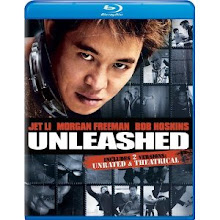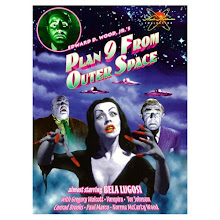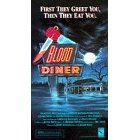Prelude
This post will ultimately be about “Hukkle,” I promise, but with all this best-worst movie talk surrounding “Troll 2,” I have to insist on one more bad movie recommendation here. “Battlefield Earth: A Saga of the Year 3000” (2000) is the kind of movie Andy refers to in his post for “Troll 2” — it’s bad but still entertaining. I actually have a lot to say about it, but in an effort to shorten my posts, I’ll simply refer you to this episode of KCRW’s The Business, where you can learn all the background you’ll ever need to know. It’s a must-see if you like entertainingly bad movies. It’s hard to believe that “Battlefield Earth” turned out as it has, considering that it was made so recently, in these modern times of movie magic — with a bankable talent like John Travolta — and with a reported production budget of $73 million dollars, according to Box Office Mojo. Anyway, if you haven’t seen it, rent it and your mind will be blown in a special kind of way. Tiny spoiler to give you an example of what I’m talking about: Travolta plays a sadistic alien, and at one point he actually calls another character a “knot head.” (For extra funny irony, be sure to watch the behind-the-scenes, making-of special feature and note the way the filmmakers describe the movie.)
“Hukkle”
All experimental films are “unusual,” so I guess we could simply discuss only experimental films and fulfill the objective of this site. But I just couldn’t take it. I knew Andy wouldn’t be able to stay awake through “Hukkle.” A couple of posts below Andy said “The Puffy Chair” was pointless. Well, “Hukkle” is the epitome of pointless, and I’m sorry I chose to subject us to it. But luckily, you don’t have to watch it.
“Hukkle,” which means “hiccup,” is a Hungarian film written and directed by György Pálfi. It opens with a slithering snake. We watch the snake’s uncoiling during the credit sequence. Now, this is typical for a credit sequence: We’re usually shown something unrecognizable that’s barely interesting enough to keep our attention. But we have the promise of the film to follow, so we wait it out. Well, “Hukkle” continues to give us opening-credit-sequence-like imagery.
An elderly man has hiccups. We watch him for longer than we are willing. I’m no actor, so I’m not sure how difficult it would be to “act” like I have hiccups. Surely there was an audition process for this task. Assuming there was, I can only conclude that this guy was chosen because he has a wrinkled face that makes for interesting close-ups — which there are plenty of. But this guy fake hiccups and smiles about it, like he’s a child on a merry-go-round. (Anyone who’s ever had hiccups before knows you don’t just keep smiling about it. Hiccups are irritating; perhaps that explains this appropriately titled, filmic indulgence.)
Now, if I seem like I’m nitpicking the smallest, most insignificant details, it’s because these hiccups are in fact the film’s largest, most significant detail.
For these kinds of films, often the word “experimental” should be read as “non-narrative film,” meaning there’s no story, or as Andy terms it, “pointless.” Basically, “Hukkle” just shows us a bunch of random footage — often in close-up — of various people, animals, insects, objects and machinery just going about the regular hum of life.
Believe me, the best moments or imagery from the film are all shown in the trailer. Watch the trailer, and you’ll get the point. But in short, here are the things “Hukkle” shows us: hiccups, people, animals, machinery, nature, hiccups, people eating, animals eating, hardly any dialogue, hiccups, a long, super close-up of pig testicles, recurring characters, hiccups, etc., etc. You get the point.
Now, there are people who grasp at straws to assemble a narrative through-line for this film. Well, I refute this, and for my evidence, I can explain this rather simply — it’s called “the Kuleshov effect.” Allow me to explain:
Editing is among the most powerful techniques employed in the cinema. It effortlessly manipulates our understanding of how the images portrayed onscreen interrelate both thematically and spatially. Lev Kuleshov was a Russian film theorist who conducted an experiment that proved that various shots edited together didn’t have to have any sort of relationship in actuality, but because they are edited together, the viewer’s mind draws certain conclusions. If I recall correctly, in Kuleshov’s experiment he showed a viewer a picture of a person with a blank expression and then a bowl of soup and then a blank expression again. That viewer was sure the person looked hungry. He did the same thing with a different viewer and replaced the bowl of soup with a casket. That viewer was sure the actor was portraying sadness.
We, as filmgoers, are conditioned to draw conclusions between the images flashed onscreen, that we might assemble and decipher a story from the filmed images. And I’d assert that those who insist on as much from “Hukkle” have simply been “Kuleshoved.”
But even if the writer-director himself, György Pálfi (I assume that’s a male’s name), told me he had in fact constructed a faint and subtle narrative within his film, I’d still dismiss it as little more than a Lumière brothers actuality, along the lines of “Arrival of a Train at La Ciotat” (circa 1895 / 1896), but not quite as artistic.


 to trick humans into eating their specially prepared foods, which transform the victims into plants that can therefore be eaten. Now, you have to admit, that's pretty original material. (The luring victims to eat repeatedly becomes awkward and tiresome, however — not an easy plot for the screenwriters to sustain; to see an equally difficult writing challenge handled much more effectively, watch "Perfume: The Story of a Murderer." That killer was a big "smeller.")
to trick humans into eating their specially prepared foods, which transform the victims into plants that can therefore be eaten. Now, you have to admit, that's pretty original material. (The luring victims to eat repeatedly becomes awkward and tiresome, however — not an easy plot for the screenwriters to sustain; to see an equally difficult writing challenge handled much more effectively, watch "Perfume: The Story of a Murderer." That killer was a big "smeller.")




























































